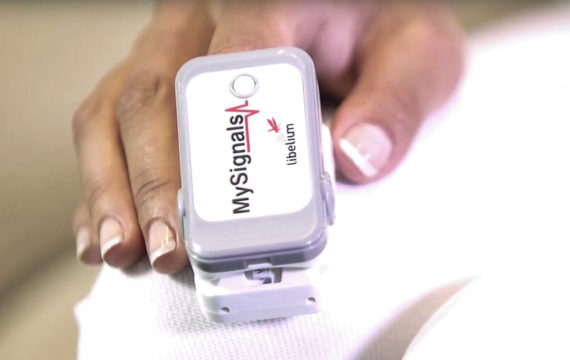Por Alicia Asín, cofundadora y directora general de Libelium
La crisis a la que nos enfrentamos con la pandemia del COVID debe servirnos de lección para no volver a cometer los mismos errores. Porque, en un mundo cada vez más globalizado, lamentablemente esta no será la última pandemiaaunque deberíamos ver que es el último confinamiento al que nos vemos obligados.
Una vez superada la fase inicial de alerta sanitaria, y sin dejar de lamentar la consiguiente pérdida masiva de vidas humanas, será el momento de aflojar la parálisis económica y social.
En muchos países, como España, la población clama para que las autoridades lleven a cabo la análisis necesarios para diferenciar entre la población enferma y la no sana. Esto es fundamental para reactivar la economía y frenar la pérdida de puestos de trabajo.
Si bien hay quien echa las campanas al vuelo con respecto a la viabilidad de las PCR o las pruebas rápidas, se necesitan medidas urgentes sacar a las personas de un confinamiento que se está volviendo insoportable para su salud mental y física y su independencia económica.
La tecnología IoT desempeña un papel muy oportuno para que los ciudadanos vuelvan a salir a la calle con relativa seguridad. La conexión entre el mundo físico y el digital es ahora más necesaria que nunca para analizar el mundo real con datos objetivos y utilizar esos parámetros para activar alarmas o establecer acciones coherentes.
Presento tres casos reales para una aplicación que puede ser vital en la vuelta a lo que ahora todos llaman la "nueva normalidad" en términos de salud, empresa y mundo social.
1) Tecnología IoT Post-COVID, vigilancia sanitaria a distancia
En el ámbito sanitario, la los servicios sanitarios tienen que volver a su actividad normal: consultas de atención primaria, visitas a especialistas, seguimiento de enfermos crónicos, operaciones aplazadas. ¿Vamos a volver a los hospitales y centros de salud que ya estaban saturados y llenaban las salas de espera antes de la pandemia? La respuesta es no, si podemos evitarlo.
Cualquier solución de seguimiento sanitario a distancia agilizaría los servicios y evitaría que la gente deambulase innecesariamente por los espacios sanitarios. Por tanto, promovamos herramientas de medición que permitan a los usuarios vigilar sus parámetros de salud y compartir los resultados con la teleasistencia. En estas semanas se ha demostrado que la atención médica a distancia para la atención primaria es posible. Extendámosla, mejorando así la eficiencia del sistema.

2) Tecnología IoT Post-COVID, Actividad de trabajo
Segundo supuesto: actividad laboral, ya sea pública o privada. Imagine que tiene la suerte de poder volver físicamente a su puesto de trabajo. Compartir espacios cerrados, salas de reuniones, comedores, aulas, aseos, etc. con otras personas de tu organización. Es entonces cuando se convierte en más necesario que nunca saber si los trabajadores y las personas que entran en nuestro espacio de trabajo están enfermos.
Puede haber algunos que hayan superado la enfermedad, otros que sean asintomáticos, pero, sin duda, a falta de pruebas médicas fiables, la fiebre es uno de los síntomas inequívocos de ésta u otras infecciones. ¿Cuánto se habría frenado la expansión si se hubieran instalado sistemas de control de pasajeros en aeropuertos, estaciones de tren e instalaciones públicas?

Tecnología IoT Post-COVID, actividad social, cultural y comercial
Por último, apliquemos la tecnología IoT a la recuperación de la actividad social, comercial y cultural. Ante la laxitud, en algunos países, de la aplicación de medidas de distanciamiento social, existe una necesidad concreta de que los espacios comerciales y culturales ofrezcan a los clientes la seguridad y fiabilidad de que no correrán riesgo de contagio. Si voy a un supermercado, a un centro comercial o incluso a un restaurante, prefiero visitar aquellos que respetan las distancias recomendadas y la capacidad de los usuarios.
Y lo haré mucho más feliz si conocer de antemano cuál es su ocupación en tiempo real a través de Internet, sin necesidad de que cada establecimiento ponga un empleado con mostrador en cada puerta. La tecnología de detección de personas e incluso del tráfico de vehículos mediante el escaneado de dispositivos móviles es una buena herramienta para ello sin menoscabo de la privacidad que las cámaras de vigilancia siempre ponen en entredicho. Incluso para que las fuerzas de seguridad establezcan controles sólo donde sean necesarios en función de la saturación de las zonas urbanas en cada momento.
![]()
Está claro que avanzamos hacia una realidad diferente y debemos dotar a nuestras empresas, ciudades y ciudadanos de la tecnología que realmente les permita continuar con sus vidas. Porque la vida es lo más preciado que tenemos.



























